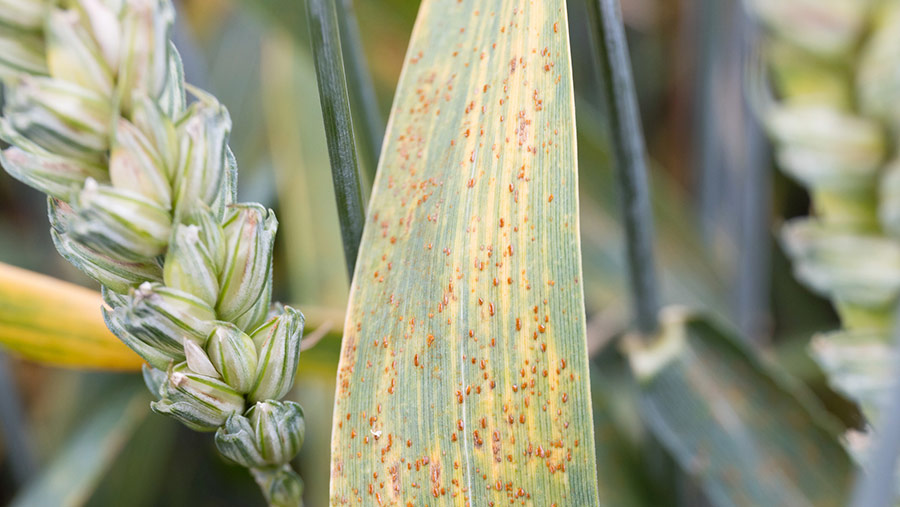Brown rust threat builds for wheat in warm spring
 © Blackthorn Arable
© Blackthorn Arable Winter wheat growers are being urged to look out for early attacks of brown rust, which can devastate yields and are encouraged by the current warm dry weather.
Brown rust hits wheat crops predominantly in the warmer south and south-east of England, often later in the spring than yellow rust which is now widespread down the eastern side of England.
Dick Neale, technical manager at agronomy group Hutchinsons, says he has already seen the foliar disease in the very susceptible milling wheat variety Crusoe in East Anglia.
See also: Yellow rust on wheat spreads west into septoria country
Rust control
Fungicide control is similar to yellow rust, and he suggests growers include a rust-active component to their T1 sprays, such as the azoles tebuconazole or epoxiconazole, or a strobilurin fungicide.
The SDHI Solatenol (benzovindiflupyr), such as in SDHI-azole product Elatus Era and the new azole Revysol (mefentrifluconazole) used in the SDHI-azole mix Revystar, also gives good control.
Chris Bean, technical director at fellow agronomy group Zantra covering the brown rust “hotspot” of Kent and south Essex, says all quality wheat varieties from Groups 1, 2 and 3 showed brown rust in the company’s trials last year.
Wheat varieties
As well as Crusoe, varieties such as Zyatt and Firefly showed high levels of brown rust, but he reiterated that all quality wheat varieties are at risk.
“Over the past 40 years, it has been shown that if you don’t do a good T0 and T1 then you will struggle with brown rust later in the season,” he tells Farmers Weekly.
Wheat varieties are assessed on a 1 to 9 scale for disease resistance in the AHDB Recommended List, where 1 is very susceptible and 9 shows good resistance. Brown rust Crusoe scores a lowly 3, Barrel a 5, and Zyatt and Firefly are both 6.

